This article was co-authored by Laura Marusinec, MD and by wikiHow staff writer, Eric McClure. Dr. Marusinec is a board certified Pediatrician at the Children's Hospital of Wisconsin, where she is on the Clinical Practice Council. She received her M.D. from the Medical College of Wisconsin School of Medicine in 1995 and completed her residency at the Medical College of Wisconsin in Pediatrics in 1998. She is a member of the American Medical Writers Association and the Society for Pediatric Urgent Care.
There are 13 references cited in this article, which can be found at the bottom of the page.
wikiHow marks an article as reader-approved once it receives enough positive feedback. In this case, several readers have written to tell us that this article was helpful to them, earning it our reader-approved status.
This article has been viewed 339,878 times.
As tempting as it may be to pop that blister, you should definitely weigh the risks and benefits first. If your goal is to get rid of it, you’re normally going to be better off leaving it alone. However, there are a few cases where bursting that bubble might be a reasonable option. Luckily, we’ve compiled everything you need to know about that annoying little blister so that you can determine if popping it is the right move for you.
Steps
Is it ever a good idea to pop a blister?
-
1Not usually— let the blister heal naturally, instead. A blister is your body’s natural response to irritation or injury. It will go away on its own once your skin heals.[1] Popping a blister may lead to an infection and slow the healing time, so it’s best to leave it alone.[2]
- As annoying or embarrassing as it may be, rest assured that your blister isn’t going to be there forever. In most cases, it’s going to reduce in size and disappear over the course of a few days.[3]
-
2It may be okay to pop it if it’s really painful or it’s going to pop anyway. If the blister is in a location where it’s highly probable that you’re going to pop it on accident, or the blister is causing you persistent pain, popping it yourself may be the ideal option. In most cases, if you’re careful and do this safely, you can pop the blister at home.[4]
- If it’s mild pain and you can live with it for a bit, you’re probably better off leaving the blister alone.
- If you’ve got a blister on the bottom of your foot, on your hand, or on your ankle and you can’t skip shoes or wear sandals for a few days, it’s probably going to pop anyway.
Advertisement -
3You should let a sunburn or burn blister heal naturally, even if it hurts. The one exception when it comes to popping painful blisters is with burns. If you get sunburn or you burn yourself on accident and a blister develops, do not pop it.[5] This will only lead to more pain, and it may increase your risk of skin cancer.[6]
What precautions should I take before popping a blister?
-
1Call your doctor before you go through with it to make sure it’s safe. There are a handful of conditions where it’s usually not a good idea to pop blisters. Hemophiliacs, diabetics, and people with a compromised immune system typically shouldn’t do this, but it really depends on your personal situation. Call your primary care doctor and ask them before you break the needle out, just to be safe.[9]
-
2If possible, see a doctor and have them do it for you. If your doctor gives you the green light to do it at home, you can. However, it’s usually best to have a trained medical professional do this if possible. This process involves puncturing your skin with a sterilized needle, and if you don’t sterilize the needle properly or you aren’t careful with the needle, you might injure yourself.[10]
How do I pop a blister safely?
-
1Wash your hands, clean the area, and apply iodine to the skin. Use soap and water to scrub your hands and clean the blistered skin. Pour some iodine in a sterile cotton pad and work it gently into the blister.[11] This will reduce the odds that your popped blister becomes infected.
- Wash your hands and the affected skin for at least 20 seconds to ensure that it’s completely clean.[12]
- You can use rubbing alcohol if you don’t have any iodine on hand.
-
2Sterilize your needle and puncture the edge of the blister. Grab a clean needle and sterilize it by wiping it down thoroughly with rubbing alcohol. Adjust your body so that the blister is visible and steady. Then, slide the needle into the blister just above the point where it meets the undamaged skin around it. Keep the tip of the needle pointed slightly away from your body to avoid puncturing yourself. Use a clean cloth or paper towel to soak up any fluid that comes out.[13]
- You don’t need to push the needle all the way through the blister. Just insert the needle far enough that fluid starts coming out and then pull it out carefully.
- If you can’t reach the blister, you may need to enlist some help for this bit. Just make sure that whoever is helping you out has a steady hand.
-
3Apply petroleum jelly to the skin and cover popped blister with gauze. Once you’ve drained the fluid, do not pick or peel at the dead skin. Rinse the area off with warm water, dry it gently, and work some petroleum jelly into your skin to protect the blister while it heals. Place a sterile, nonstick gauze pad on top of the area and secure it in place with a bandage or medical tape.[14]
- Check the skin every day and swap out your dressings every morning. After a few days, carefully remove the dead skin with sterilized tweezers and scissors. Then, continue to apply petroleum jelly and cover the skin until it heals completely.
How do I know if a popped blister is infected?
-
1It’s probably infected if yellow or green pus comes out. Yellow or green pus is often a big sign that your blister is infected. If you think that your blister is slightly green or yellow, or you pop it and a liquid of that color comes out, go see your doctor. You really shouldn’t leave an infection of this sort untreated, and it will likely to lead to more blisters in the future if you don’t do anything.[23]
-
2If your blister hurts or feels like it burns, it could be a sign of an infection. If the skin around your blister is uniquely painful when you aren’t putting pressure on it, or the skin feels like it burns, it might be infected. Again, it’s best if you see a doctor if this is the case. If you’re in active pain when you don’t touch the blister, get it checked out.[24]
- Pain is definitely subjective, but if you’ve ever had a blister before, you should know how it feels. If anything seems off about the sensation, or the pain is unique or persistent, see a doctor just to be safe.
Expert Q&A
-
QuestionWhat happens if the skin underneath is tender when I peel the blister off?
 Laura Marusinec, MDDr. Marusinec is a board certified Pediatrician at the Children's Hospital of Wisconsin, where she is on the Clinical Practice Council. She received her M.D. from the Medical College of Wisconsin School of Medicine in 1995 and completed her residency at the Medical College of Wisconsin in Pediatrics in 1998. She is a member of the American Medical Writers Association and the Society for Pediatric Urgent Care.
Laura Marusinec, MDDr. Marusinec is a board certified Pediatrician at the Children's Hospital of Wisconsin, where she is on the Clinical Practice Council. She received her M.D. from the Medical College of Wisconsin School of Medicine in 1995 and completed her residency at the Medical College of Wisconsin in Pediatrics in 1998. She is a member of the American Medical Writers Association and the Society for Pediatric Urgent Care.
Board Certified Pediatrician The best thing is not to peel of the blister or the skin of a blister. But if you have, then apply an ointment like Vaseline or an antibiotic ointment to the area and cover with a soft bandage. You can also take acetaminophen (Tylenol) or ibuprofen if the area is sore.
The best thing is not to peel of the blister or the skin of a blister. But if you have, then apply an ointment like Vaseline or an antibiotic ointment to the area and cover with a soft bandage. You can also take acetaminophen (Tylenol) or ibuprofen if the area is sore. -
QuestionIs a regular blister different from a gymnastics blister?
 Laura Marusinec, MDDr. Marusinec is a board certified Pediatrician at the Children's Hospital of Wisconsin, where she is on the Clinical Practice Council. She received her M.D. from the Medical College of Wisconsin School of Medicine in 1995 and completed her residency at the Medical College of Wisconsin in Pediatrics in 1998. She is a member of the American Medical Writers Association and the Society for Pediatric Urgent Care.
Laura Marusinec, MDDr. Marusinec is a board certified Pediatrician at the Children's Hospital of Wisconsin, where she is on the Clinical Practice Council. She received her M.D. from the Medical College of Wisconsin School of Medicine in 1995 and completed her residency at the Medical College of Wisconsin in Pediatrics in 1998. She is a member of the American Medical Writers Association and the Society for Pediatric Urgent Care.
Board Certified Pediatrician A gymnastics blister is usually caused by friction. These tend to have less fluid in them, and aren't usually infected. The best thing is to try to prevent these from happening by watching your technique and using proper precautions. Consider trying hand grips, special protective creams, using chalk, or tape.
A gymnastics blister is usually caused by friction. These tend to have less fluid in them, and aren't usually infected. The best thing is to try to prevent these from happening by watching your technique and using proper precautions. Consider trying hand grips, special protective creams, using chalk, or tape.
Warnings
- If you get blisters out of nowhere (i.e. nothing was rubbing against your skin), see a doctor. There are a handful of medical conditions that can cause blisters to develop randomly.[26]⧼thumbs_response⧽
- See a doctor if you develop multiple blisters in more than one location, or if your blisters are in an odd location, like your eyelids, mouth, or genitals.[27]⧼thumbs_response⧽
References
- ↑ https://health.clevelandclinic.org/blisters-causes-treatments-and-why-you-should-never-pop-them/
- ↑ https://www.betterhealth.vic.gov.au/health/ConditionsAndTreatments/blisters
- ↑ https://www.nhsinform.scot/illnesses-and-conditions/injuries/skin-injuries/blisters
- ↑ https://www.mayoclinic.org/first-aid/first-aid-blisters/basics/art-20056691
- ↑ https://www.mayoclinic.org/first-aid/first-aid-burns/basics/art-20056649
- ↑ https://kidshealth.org/en/teens/sunburn.html#cat20018
- ↑ https://www.mayoclinic.org/first-aid/first-aid-sunburn/basics/art-20056643
- ↑ https://www.mayoclinic.org/first-aid/first-aid-burns/basics/art-20056649
- ↑ https://www.mayoclinic.org/first-aid/first-aid-blisters/basics/art-20056691
- ↑ https://health.clevelandclinic.org/blisters-causes-treatments-and-why-you-should-never-pop-them/
- ↑ https://www.mayoclinic.org/first-aid/first-aid-blisters/basics/art-20056691
- ↑ https://www.cdc.gov/handwashing/when-how-handwashing.html
- ↑ https://www.mayoclinic.org/first-aid/first-aid-blisters/basics/art-20056691
- ↑ https://www.mayoclinic.org/first-aid/first-aid-blisters/basics/art-20056691
- ↑ https://www.nhsinform.scot/illnesses-and-conditions/injuries/skin-injuries/blisters
- ↑ https://www.nhs.uk/conditions/blisters/
- ↑ https://cms.qut.edu.au/__data/assets/pdf_file/0003/451767/Book2-wound-dressing-guide.pdf
- ↑ https://cms.qut.edu.au/__data/assets/pdf_file/0003/451767/Book2-wound-dressing-guide.pdf
- ↑ https://health.clevelandclinic.org/blisters-causes-treatments-and-why-you-should-never-pop-them/
- ↑ https://www.health.harvard.edu/a_to_z/blisters-overview-a-to-z
- ↑ https://www.nhs.uk/conditions/blisters/
- ↑ https://my.clevelandclinic.org/health/diseases/15134-impetigo
- ↑ https://www.nhsinform.scot/illnesses-and-conditions/injuries/skin-injuries/blisters
- ↑ https://www.nhsinform.scot/illnesses-and-conditions/injuries/skin-injuries/blisters
- ↑ https://www.aad.org/public/everyday-care/injured-skin/burns/prevent-treat-blisters
- ↑ https://health.clevelandclinic.org/blisters-causes-treatments-and-why-you-should-never-pop-them/
- ↑ https://www.nhsinform.scot/illnesses-and-conditions/injuries/skin-injuries/blisters
About This Article
To pop a blister, start by washing your hands and the blistered area thoroughly with soap and warm water. You can also disinfect the area by pouring rubbing alcohol or antiseptic over it. It's best to use a pre-packaged, sterile needle for this job, but you can use a sewing needle from home as long as you soak it in rubbing alcohol first. Use the sterile needle to lance the blister in 2-3 places near the bottom on each side. Then, let the blister drain naturally or gently apply pressure in a downwards fashion to push the fluid through the holes. Finish up by washing the area again with soap and water and covering it with a bandage. For tips on recognizing the symptoms of an infected blister, read on!
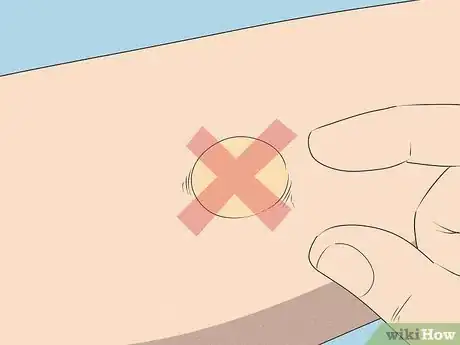
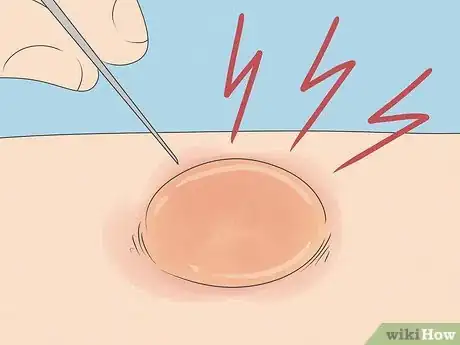



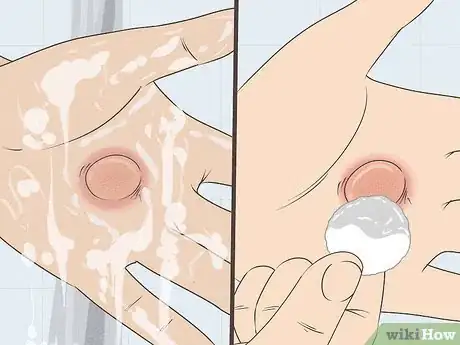

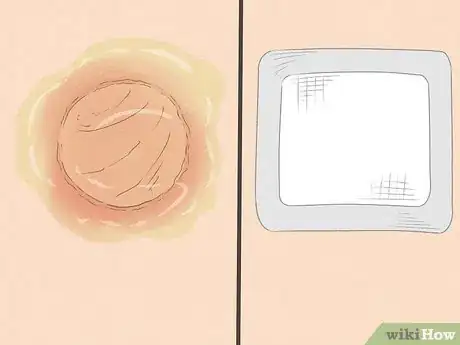
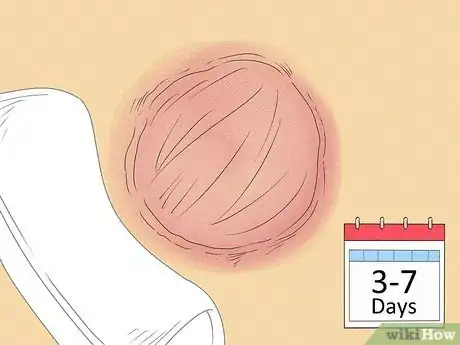
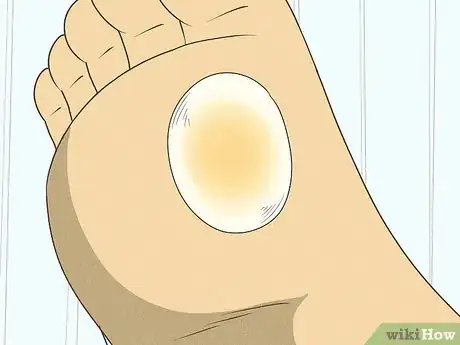
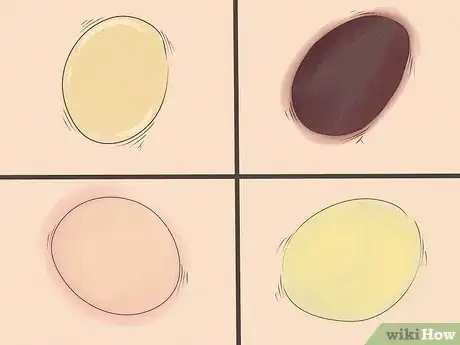
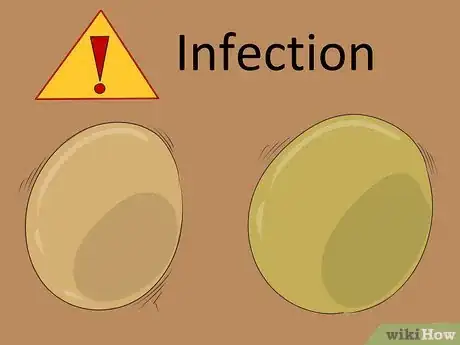


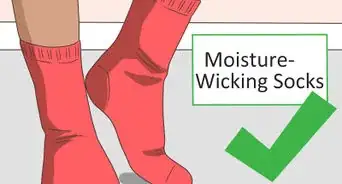



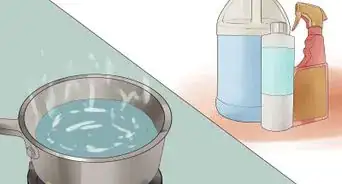
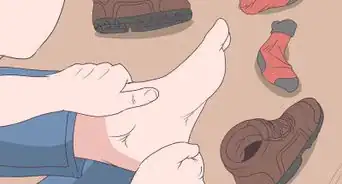
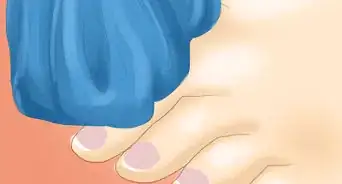

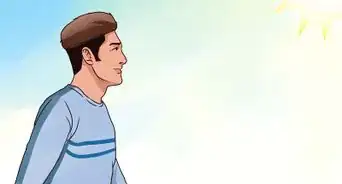
















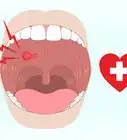




































Medical Disclaimer
The content of this article is not intended to be a substitute for professional medical advice, examination, diagnosis, or treatment. You should always contact your doctor or other qualified healthcare professional before starting, changing, or stopping any kind of health treatment.
Read More...